Design & Technology
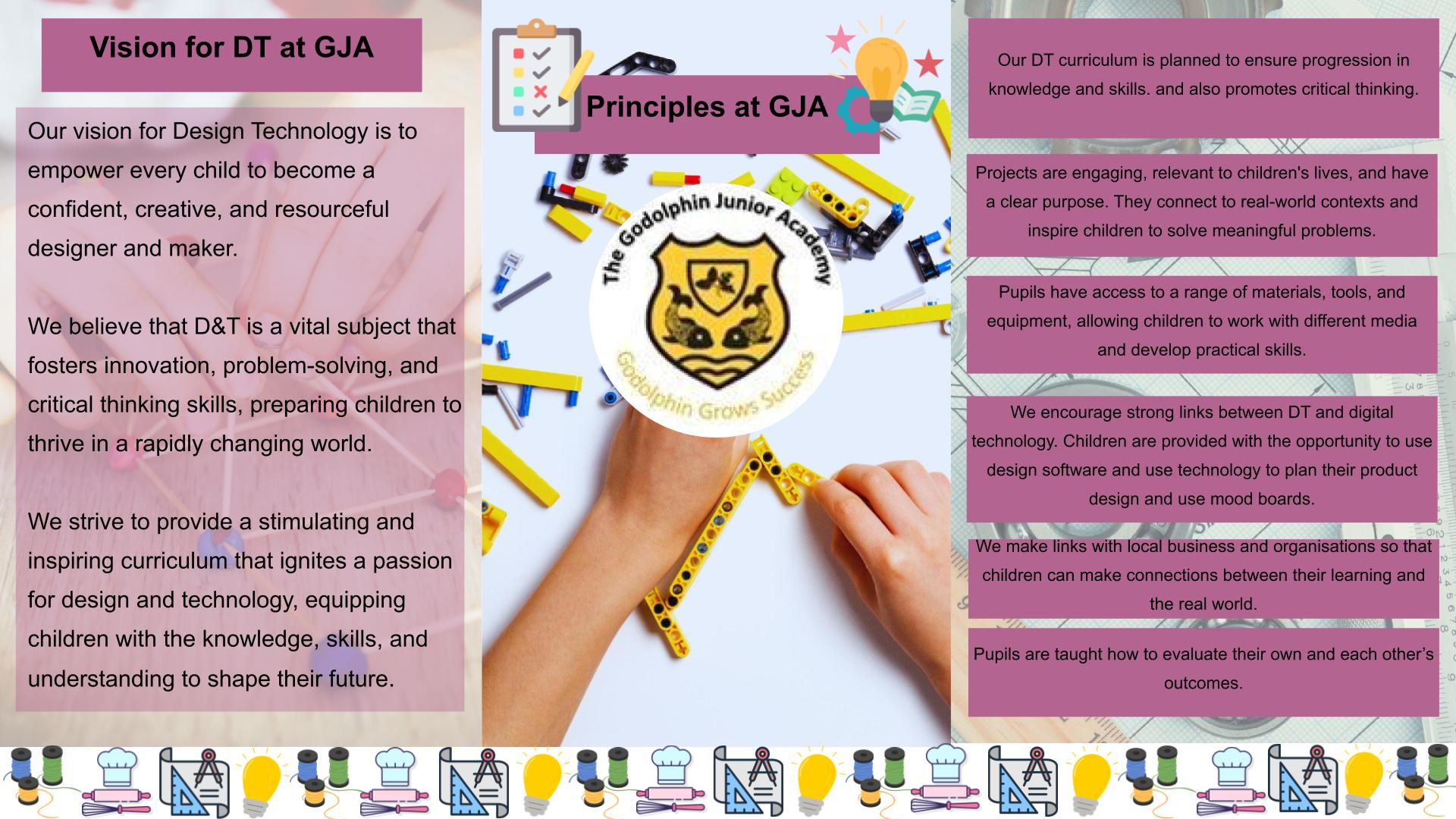
Intent
At Godolphin Junior Academy we aim to provide all children with a broad and balanced curriculum which prepares them for life beyond primary education. We encourage children to use their creativity and imagination, to design and make products that solve real and relevant problems within a variety of contexts, considering their own and others’ needs, wants and values. Design and Technology is an inspiring, rigorous and practical subject. It can be found in many of the objects children use each day and is a part of children’s immediate experiences. It encourages children to learn to think and intervene creatively to solve problems as individuals and as a member of a team.
‘Design is the most immediate, the most explicit way of defining what products become in people’s minds’ Johnathon Ive (former Chief Design Officer of Apple Inc)
Our lessons provide children opportunities to be innovated by engineers, designers, chefs and architects to enable them to create a range of structures, mechanisms, textiles, electrical systems and food products with a real life purpose.
All our teaching of DT follows the Design, Make and Evaluate cycle. Each stage is rooted in technical knowledge, vocabulary and real life, relevant contexts which gives meaning to learning. While Making, children choose from a range of media and tools to implement their designs. To Evaluate, children analyse their own products against existing products in the current market. DT is taught to a high standard, where each of the stages are given equal weight. DT books are bursting at the seams with evidence of the children’s learning journey, which develops to show clear progression across each year group.
We have key concepts running through our DT curriculum. Through these concepts we teach pupils the essential knowledge they need to know to be successful in their learning, and build upon this knowledge as they progress through each unit of design and technology.
Our pupils are able to refer to our DT concepts when making connections between units of work and across the wider curriculum. We know that if pupils can make connections in their learning, then they are more likely to embed this knowledge and remember it over time. This is because pupils have been given the opportunity to think deeply and recognise how knowledge is connected and related to their prior learning.
DT Overview
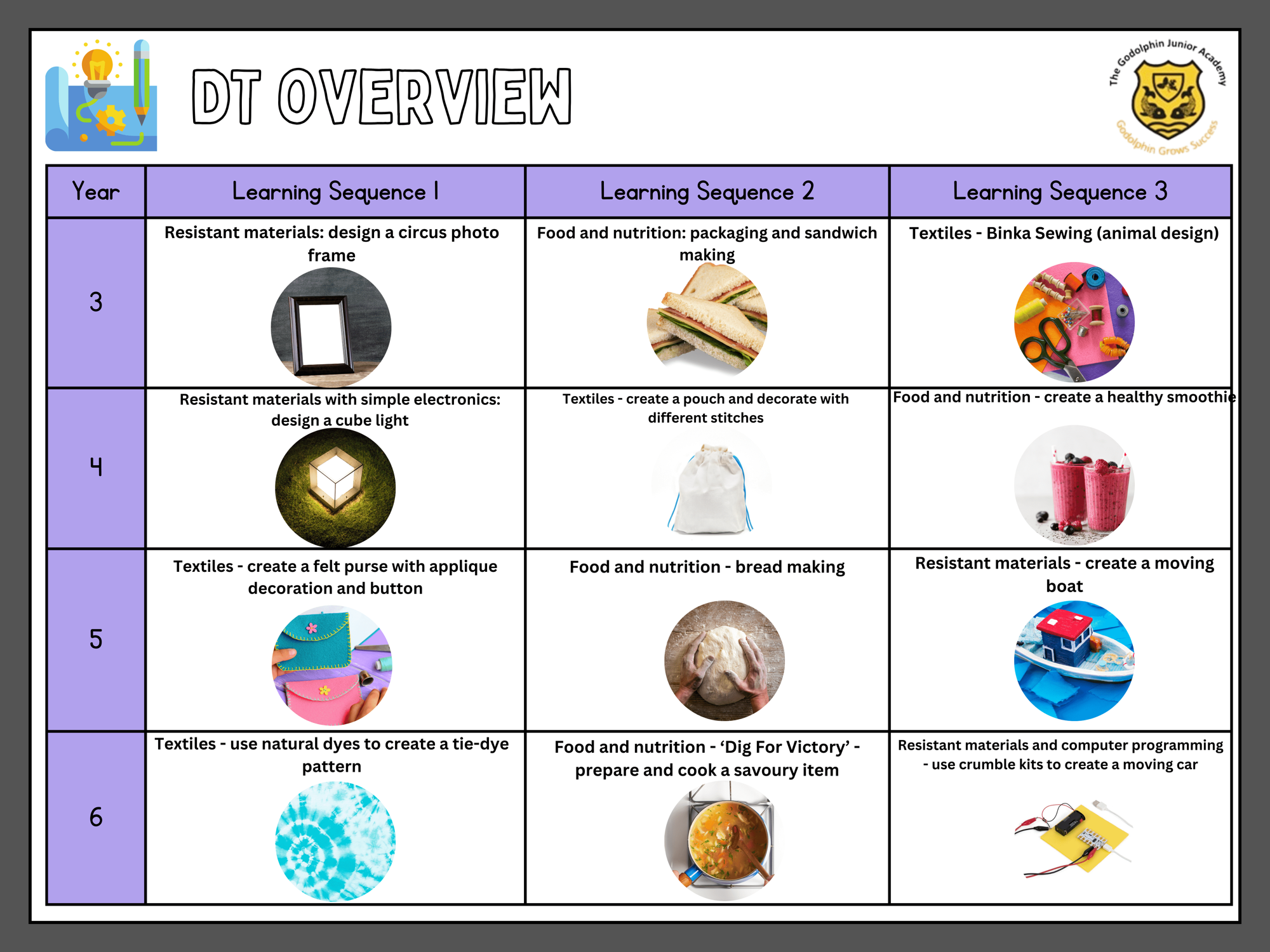
DT Concepts
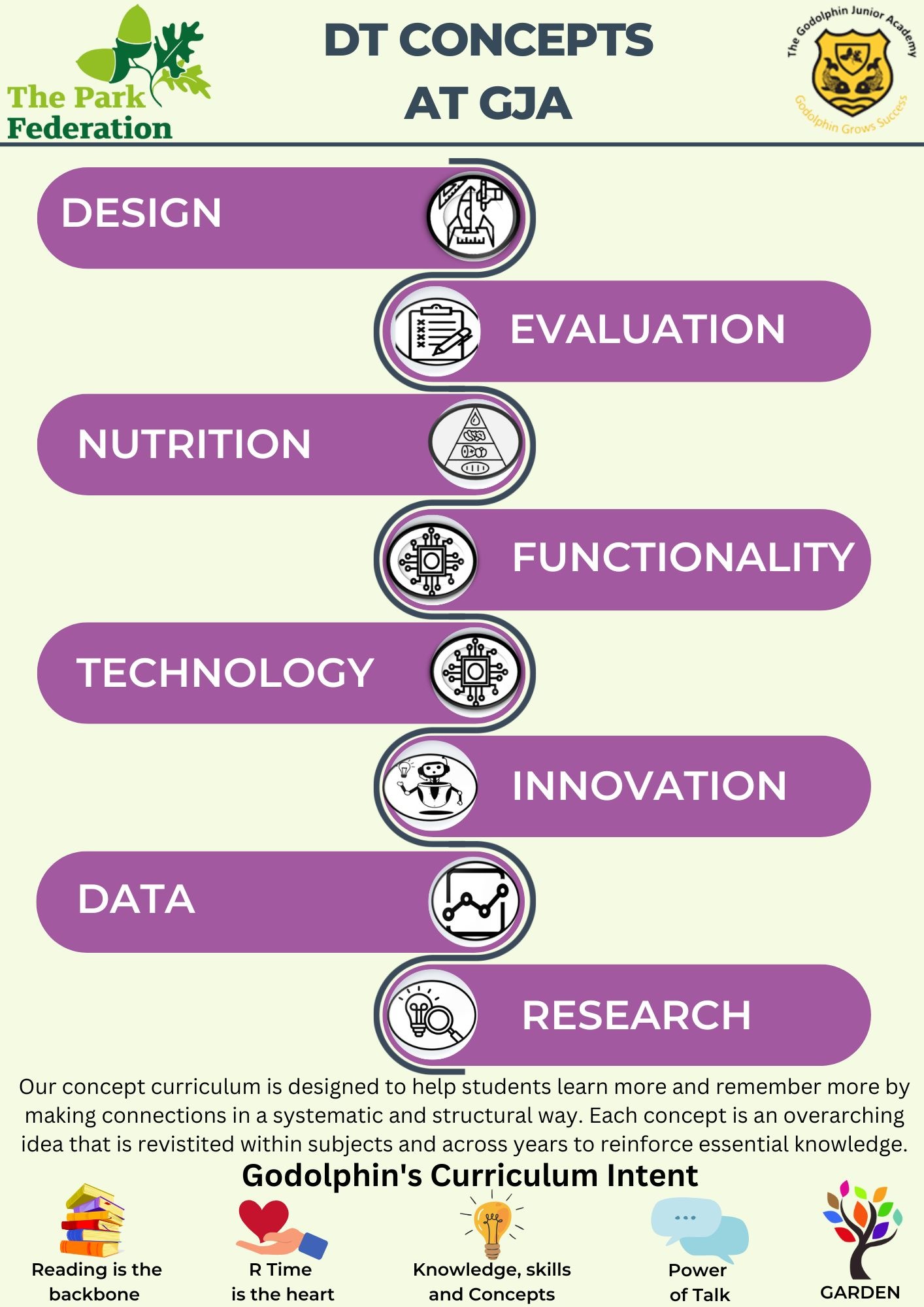
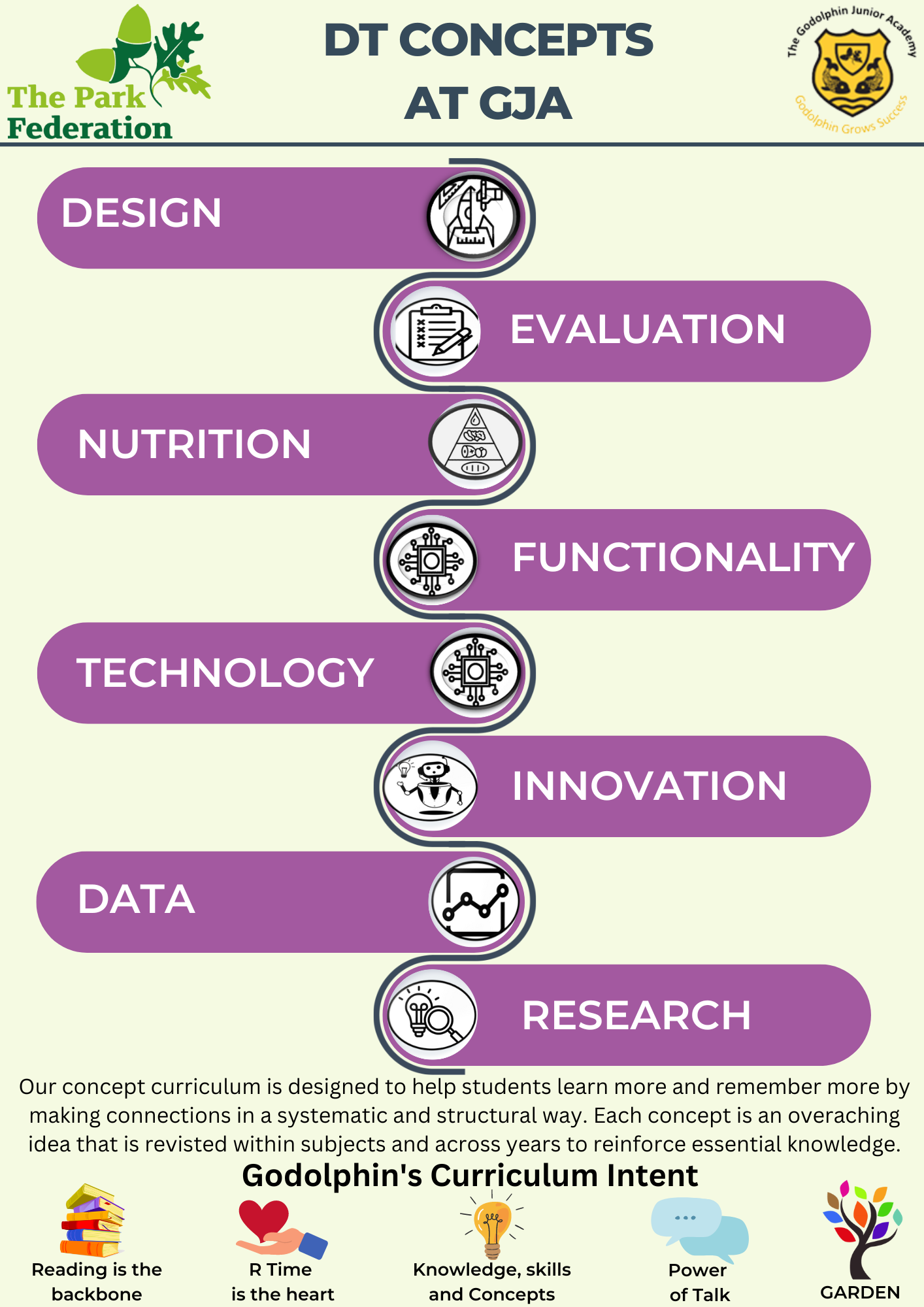
View the DT concept progression booklet below. This outlines how each concept or 'big idea' interlinks within each Art topic so that children can make connections which helps them to learn more and remember more over time.
Our progression map of DT knowledge and skills can be found below.
The DT knowledge progression booklet is a collection of the pupil knowledge organisers which support each DT topic. The knowledge organisers outline the essential knowledge that children should know and learn.
The DT skills progression document is taken directly from the National Curriculum and carefully organised and sequenced so that children can develop their skills over time and build upon prior learning.
